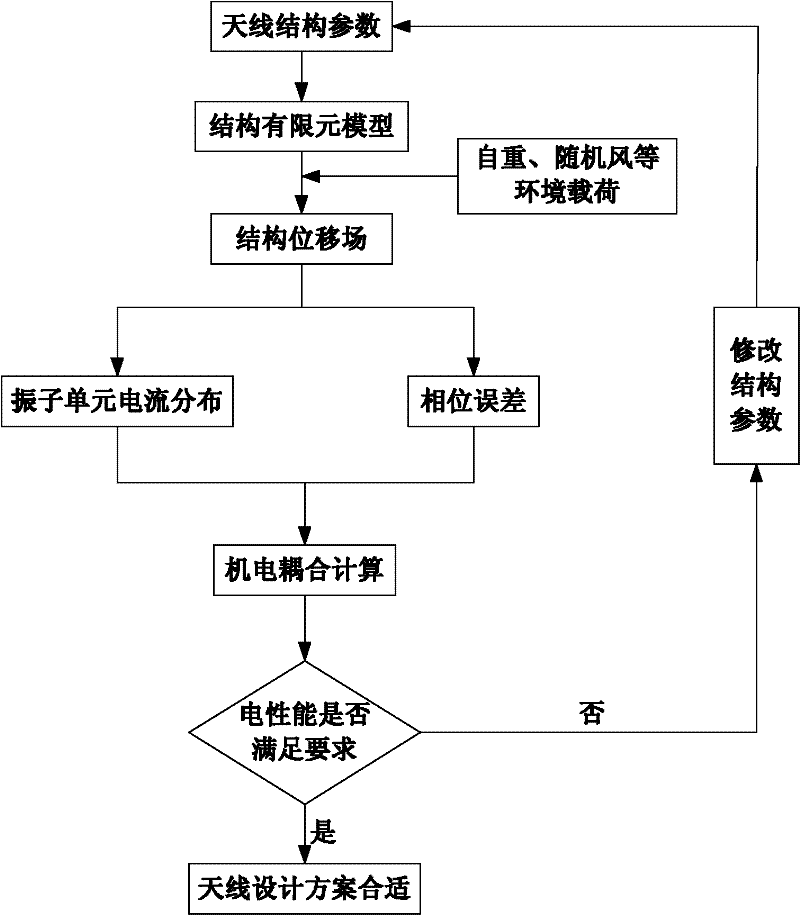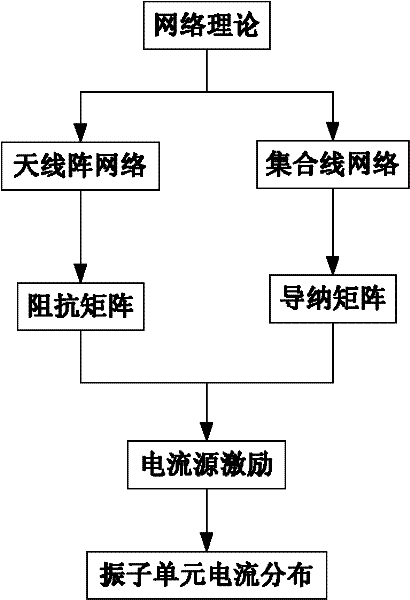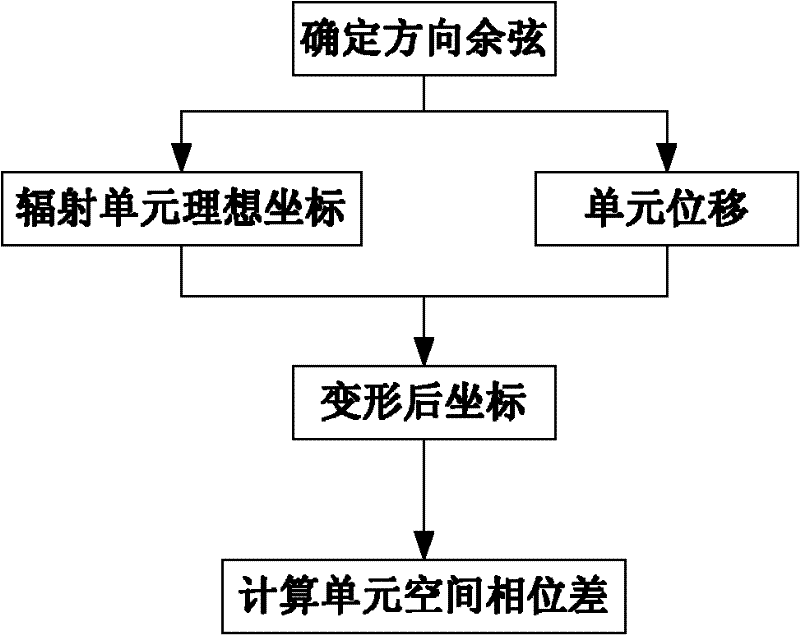Method for predicting electrical properties of deformed log-periodic antennae based on electromechanical coupling model
A log-periodic antenna, electromechanical coupling technology, applied in the direction of measuring electrical variables, measuring electricity, measuring devices, etc., can solve the problems of reducing antenna gain, destroying the non-frequency-variable characteristics of several-period antennas, and affecting the far-field pattern of the antenna, etc. Achieve the effect of reducing development cost and shortening development cycle
- Summary
- Abstract
- Description
- Claims
- Application Information
AI Technical Summary
Problems solved by technology
Method used
Image
Examples
Embodiment Construction
[0049] The present invention will be described in further detail below with reference to the accompanying drawings.
[0050] refer to figure 1 , the concrete steps of the present invention are as follows:
[0051] Step 1: Establish the LPDA structure model
[0052] The LPDA structural finite element model is determined by the structural parameters of the LPDA's radiation element type, size, and arrangement, such as Figure 7 shown. The theoretical coordinates of each radiating element on the array are obtained from the finite element model
[0053] Step 2, determine the position offset of each radiation unit of LPDA
[0054] First, determine the constraints and boundary conditions of the LPDA, including the structural constraints of the LPDA's feed slot, and the location and direction of the load;
[0055] Secondly, different processing is carried out according to the type of load, such as wind load and self-weight, according to the constraints of the structure and the ...
PUM
 Login to View More
Login to View More Abstract
Description
Claims
Application Information
 Login to View More
Login to View More - R&D
- Intellectual Property
- Life Sciences
- Materials
- Tech Scout
- Unparalleled Data Quality
- Higher Quality Content
- 60% Fewer Hallucinations
Browse by: Latest US Patents, China's latest patents, Technical Efficacy Thesaurus, Application Domain, Technology Topic, Popular Technical Reports.
© 2025 PatSnap. All rights reserved.Legal|Privacy policy|Modern Slavery Act Transparency Statement|Sitemap|About US| Contact US: help@patsnap.com



